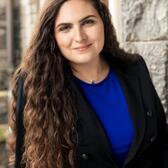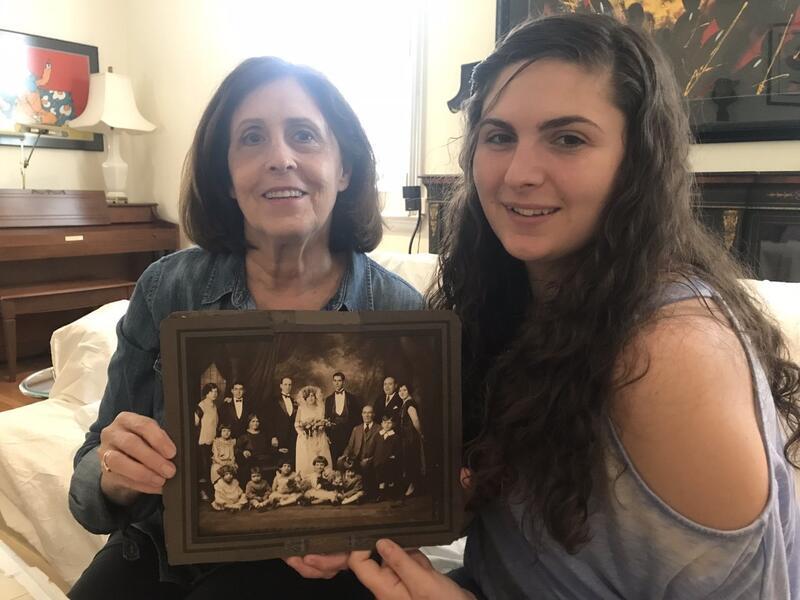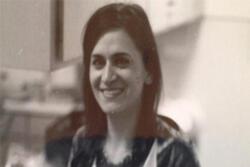Uncovering My Mizrahi and Sephardi Roots
I used to consider myself a “proud Aries Sephardi woman from Queens, New York.” 'Sephardi' as in my ancestors lived in Spain when Catholic monarchs Isabella and Ferdinand expelled them, along with all other Jewish residents, under the Alhambra Decree. My grandparents immigrated from Izmir, Turkey, a historically Sephardi community, to New York City and spoke Ladino, a mix of fifteenth-century Spanish, Hebrew, and other languages. Their families had been living in Turkey for several generations before leaving on ships to cross the Mediterranean and then the Atlantic.
Even so, I still can’t help but wonder if I’m also Mizrahi.
Many people don’t understand the difference between the two. Sephardim went to Spain and Portugal after Jews were expelled from ancient Israel by the Romans in 70 CE. In the fifteenth century, they were expelled from Spain, and then Portugal, because of the antisemitism of the Catholic monarchs. At that point, Sephardi Jews dispersed around the Mediterranean and into Western Europe, with some going as far as the Netherlands.
In the early 1900s, there was mass migration of Sephardi Jews from Turkey to the United States, which included my immediate family. Like many immigrants, they were looking for a better life in America. But Sephardi Jews had immigrated to the Americas even earlier, some during the voyage of Christopher Columbus. Luis Torres, for example, was an interpreter on Columbus’ voyage to North America. He was also a converso, a Jew who was forced to convert to Christianity under the Spanish monarchy.
Mizrahi Jews, on the other hand, remained in the Middle East and Central Asia, primarily in Muslim-ruled countries, since the time of ancient Israel. After the Israeli War of Independence in 1948, a million Mizrahi Jews were expelled from Arab countries, and many went to Israel. (In 2014, the Israeli government designated November 30 as the national day to commemorate this displacement.) The expulsion of Mizrahim was due to increasing antisemitism in the Arab world, which included the spread of Nazism in the years leading up to World War II. For example, Hitler’s book Mein Kampf was translated into Arabic and printed in a Baghdadi newspaper in the 1930s. In 1941, the Farhud, a massive pogrom against Baghdad’s Jews, caused many Iraqi Jews to flee their country for Iran, Lebanon, and even India. Some even tried to escape to Palestine, but were stopped by either the Iraqi police or the Palestinian police who had strict quotas on immigration. Most of the Jewish refugees ended up going back to Iraq once the situation there stabilized.
One reason I suspect I have a mix of Sephardi and Mizrahi Jewish ancestry is because of genetic testing. The results of two genetic tests I did suggested that I have both Levantine (i.e., from the Levant, an eastern Mediterranean region that includes Syria, Israel, Palestine, Jordan, and Lebanon) and Sephardi DNA. The results made me wonder if the Levantine part of my ancestry is actually Mizrahi.
I also can’t help but wonder if I have both Sephardi and Mizrahi ancestors who intermarried. This seems plausible, considering that some Mizrahi and Sephardi Jews lived in the same areas after the fifteenth century, especially in Morocco, where some of my cousins are from.
All of these questions led me to ask an even bigger one: Who actually am I?
Luckily, I stumbled on an opportunity to answer that question. One day, I saw an Instagram post for Sephardi House , the American Sephardi Federation’s fellowship program, and on a whim, I applied. During this year-long fellowship, I learned about all things Mizrahi and Sephardi—something that had been missing from my experiences with Jewish groups up to that point. At my Hillel chapter in college, for example, there wasn’t much of a focus on Sephardi and Mizrahi identities. When I went to Israel on a Birthright trip, I was one of the only non-Ashkenazi Jews in my group.
The feeling of otherness really sank in when our group went to Yad Vashem, the Holocaust museum in Israel, where we watched a documentary on the Jews of Salonika, Greece. It was the first time I connected to my Jewish identity on a personal level, and the first time I felt the true impact of the Holocaust. As I watched the smiling Salonikan Jews disappear onto the trains that would transport them to their deaths, I broke down crying over the Holocaust for the first time in my life. I just knew that somewhere on that train, I must have had family. Years later, I learned that one of my great-grandmothers was a Sephardi Jew from Salonika.
Sephardi House was like a beacon, allowing me to connect with other non-Ashkenazi Jews. Through my fellowship, I heard testimonies from Sephardi and Mizrahi Jews, such as Rabbi Albert Gabbai of Mikveh Israel, a Spanish and Portuguese synagogue in Philadelphia and one of the oldest synagogues in the US. Rabbi Gabbai was born in Cairo to Jewish immigrant parents from Baghdad and Italy. At the start of the Six-Day War between Israel and the surrounding Arab countries, before his family could get visas to escape Egypt, Rabbi Gabbai and his three brothers were arrested by Egypt’s secret service and thrown in prison camps for three years. I was inspired by the way Rabbi Gabbai, despite everything he’d been through, went on to become an indispensable leader of his Jewish community.
The fellowship empowered me to become a leader in my Jewish community. It also gave me the opportunity to work with amazing Jewish female artists, like Bene Israel’s Siona Benjamin. With mentorship from Sephardi House national director, Bukharian Jew Ruben Shimonov, I hosted a three-part webinar series on the Jews of South Asia, an interest of mine since I married into an Indian family.
Most importantly, I met fellow Sephardi and Mizrahi students from all over the country. Our cohort’s Shabbaton was the first time I had ever been in a room with so many people of similar backgrounds, outside of synagogue. For once, I didn’t feel like an outsider. And the love that we all had for Sephardi and Mizrahi history was palpable. Sephardi House gave me the gift of community that I had been yearning for and empowered me with the knowledge of the shared histories between our communities.








The article is very interesting.
My mother always said we had Sephardic ancestry, that her great-grandparents were Sephardic, and my father once told me, while we were playing backgammon, that he was descended from a family of Iraqi Jews. I thought it was all strange because I imagined myself the grandson of Spanish and Lebanese parents, but a few months ago I took a DNA test and it showed 20% Sephardic and 20% Mizrahi, 2% Tamani, and 2% Ashkenazi. I traveled to Israel, and from my layover in Frankfurt, rabbis and Jewish families mistook me for Jewish, inviting me to prayers and to witness the inspection of kosher meals on the plane. When my guide in Israel learned I was from the Abdalla family, she was concerned about my stay in Israel, but she said that as soon as she saw me in person, she was certain I might have Jewish origins. So, I think these DNA tests might actually be right.
Regards from Brazil!
Medina wasn't a Jewish city. It was an ethnically mixed city.
There was also a large population of Mizrahi Jews in Saudi Arabia historically. The Jews that were brutalized by Muhammad and his followers were Mizrahis.
Medina was a Jewish town originally and so was the town of Khaybar. In the former's case, the residents were accused of plotting against Muhammad and all of the men were executed, the children and women were sold as slaves. In the latter case, Khaybar, it was attacked by Muhammad and his followers and all of it's wealth stolen.
The residents of Khaybar were forced to pay a yearly tax until Muhammad's successor Umar forced them to move to Syria. There are ruins of this place that still stand today, and the photos I have seen show that the Mizrahi were exquisite architects and craftspeople.
Plenty of other communities ended this way in the Arabian peninsula after the birth of Islam.
Thank you for sharing Liz. I too enjoyed our conversations at Georgetown and wish you all the best.
In reply to Thank you for sharing Liz. … by Kevin Teichman
Thank you, Proessor Teichman! So did I. :)